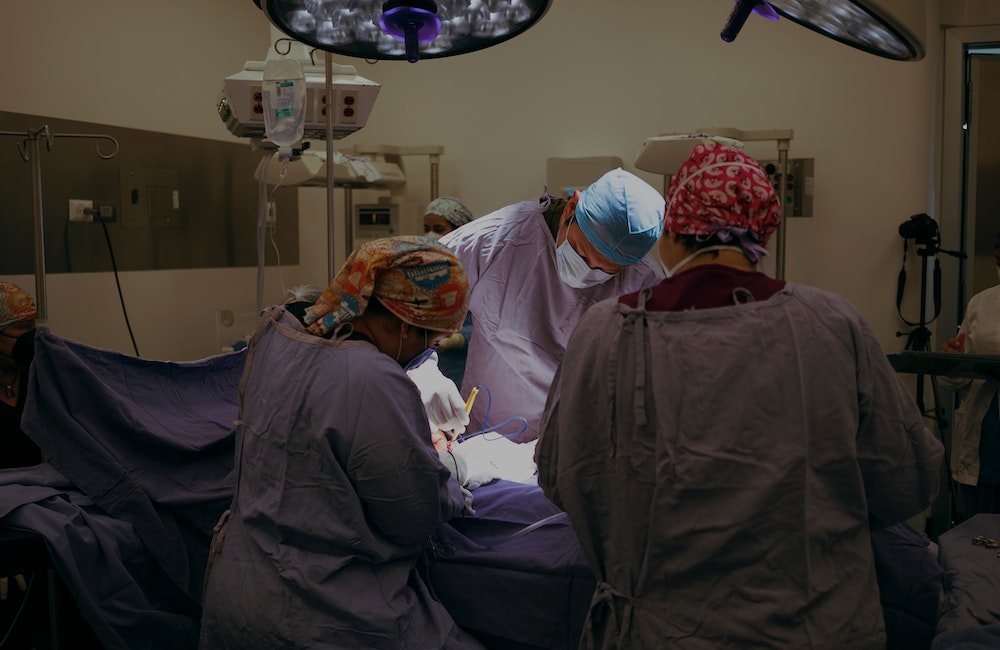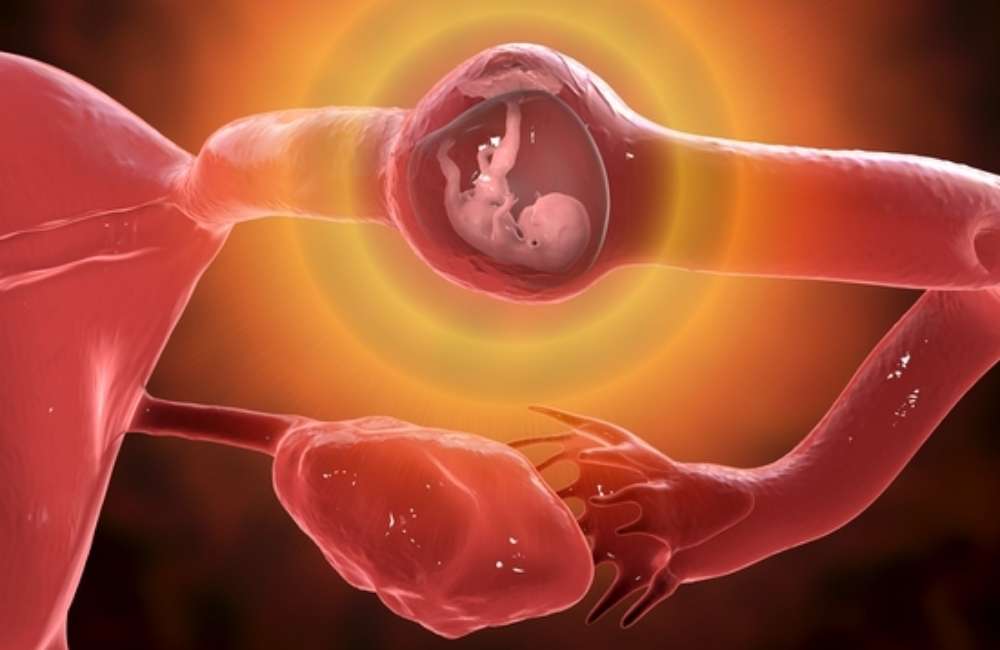Ectopic pregnancy occurs when implantation occurs at the wrong site. It is important to know what happens from fertilization to implantation. During fertilization, the sperm and egg unite in one of the fallopian tubes to form a zygote, then the zygote travels down the fallopian tube, where it becomes a morula.
Once it reaches the uterus, the morula becomes a blastocyst. It usually takes about 6-12 days for the fertilized egg to travel to the uterus and attach and then burrow into the uterine lining— in a process known as implantation. If this occurs in any other site other than the endometrial lining of the uterine cavity, ectopic pregnancy is said to occur.
What is Ectopic Pregnancy?
In Ectopic pregnancy, implantation occurs in sites other than the endometrial lining of the uterine cavity e.g.:
- Fallopian tube.
- Uterine cornua (the points where the uterus and the fallopian tubes meet.
- Cervix.
- Ovary.
- Abdominal or pelvic cavity.
Please note that ectopic pregnancies cannot be carried to term, either they rupture or evolute.
Causes and Risk Factors of Ectopic Pregnancy
Anything that blocks or impedes the safe passage of a fertilized egg through the fallopian tube (such as scarring) increases the risk that the egg will implant in the fallopian tube. So a person may be more likely to have an ectopic pregnancy in the case of:
- A previous ectopic pregnancy.
- Tubal lesions.
- Prior abdominal or particularly tubal surgery, including tubal ligation.
- Prior surgery in the pelvis or abdomen.
- Sexually Transmitted infections (STI).
- Pelvic inflammatory disease (PID).
- Endometriosis (a condition where tissue that’s similar to the lining of the uterus grows outside the uterus in the pelvic cavity.
- A pregnancy that occurred with an IUD (intrauterine device) in place.
- History of cigarette smoking.
- Older age (older than 35).
- Past use of assisted reproductive technology, such as IVF.
But the reality is that bout 50 per cent of women who have ectopic pregnancies don’t have known risk factors.
Symptoms of Ectopic Pregnancy

Symptoms of ectopic pregnancy vary and are often absent until rupture occurs. Most patients have :
- Missed period and signs of pregnancy (nausea and occasional vomiting, breast tenderness and fatigue)
- Pelvic pain (which is sometimes crampy).
- Vaginal bleeding or a brown watery discharge.
- Rupture may be heralded by sudden, severe pain, followed by syncope or by symptoms and signs of hemorrhagic shock or peritonitis. Rapid haemorrhage is more likely in ruptured cornual pregnancies.
Investigations
-
Urine pregnancy test
The first step is doing a urine pregnancy test, which is about 99% sensitive for pregnancy (ectopic and otherwise). If urine beta-hCG is negative and if clinical findings do not strongly suggest ectopic pregnancy, further evaluation is unnecessary
-
Quantitative serum beta–human chorionic gonadotropin (beta-hCG)
If urine beta-hCG is positive or if clinical findings strongly suggest ectopic pregnancy, quantitative serum beta-hCG is advised. If quantitative serum beta-hCG is < 5 mIU/mL, ectopic pregnancy is excluded.
If serum beta-hCG is above 200miU/ml level (called the discriminatory zone, ultrasonography should be done to detect a gestational sac in patients with an intrauterine pregnancy.
If the beta-hCG level is higher than the discriminatory zone and an intrauterine gestational sac is not detected, an ectopic pregnancy is likely. Normally, the level doubles every 1.4 to 2.1 days up to 41 days in ectopic pregnancy and abortions.
-
Pelvic ultrasonography
The use of transvaginal and colour Doppler ultrasonography may improve detection rates.
-
Sometimes laparoscopy
Here a special instrument called a laparoscope (a long, slender device that has a camera attached to it) is inserted into the abdomen through a small incision that allows the obstetrician-gynaecologist (ob-gyn) to view the abdominal and pelvic organs on a screen.
Diagnosis of Ectopic Pregnancy
- Ectopic pregnancy is suspected in any female of reproductive age with pelvic pain, vaginal bleeding, or unexplained syncope or hemorrhagic shock, regardless of sexual, contraceptive, and menstrual history.
- Findings of physical (including pelvic) examination are neither sensitive nor specific.
- Cervical motion tenderness, unilateral or bilateral adnexal tenderness or an adnexal mass may be present. The uterus may be slightly enlarged (but often less than anticipated based on the date of the last menstrual period).
A ruptured ectopic pregnancy is a surgical emergency because it causes maternal haemorrhage and risk of death, prompt diagnosis is essential.
Heterotopic Pregnancy
It is important to understand that a normal pregnancy can co-exist with an ectopic pregnancy. This is called heterotopic pregnancy – this is the presence of multiple gestations, with one being present in the uterine cavity and the other outside the uterus, commonly in the fallopian tube and uncommonly in the cervix or ovary.
Treatment of Ectopic Pregnancy

-
Surgical
-
Laparoscopic surgery
For stable patients, treatment is usually laparoscopic surgery. This procedure uses a slender, lighted camera that is inserted through small cuts in the abdomen. It is done in a hospital with general anaesthesia.
-
Laparotomy
Hemodynamically, unstable patients require immediate laparotomy and treatment of hemorrhagic shock.
-
- Salpingectomy (Removal of the Tube)
Salpingectomy is indicated in any of the following cases:
- The ectopic pregnancy has ruptured.
- The ectopic pregnancy is in the blind-ending distal segment in women who have had a previous partial salpingectomy.
- The tube has been reconstructed.
- Haemorrhage continues after salpingotomy.
- The current pregnancy represents a chronic tubal pregnancy (a tubal pregnancy in which the tubal wall gradually disintegrates, with slow and or repeated episodes of haemorrhaging leading to the formation of a pelvic mass.
- No future childbearing is planned.
- The ectopic pregnancy represents a failure of the previous sterilization procedure.
Only the irreversibly damaged portion of the tube is removed, maximizing the chance that tubal repair can restore fertility. The tube may or may not be repaired. After a cornual pregnancy, the tube and ovary involved can usually be salvaged, but occasionally repair is impossible, making hysterectomy necessary.
-
- Salpingostomy
Salpingostomy is a procedure in which the contents of the fallopian tubes are removed by making an opening.
-
Medical
Methotrexate is a drug that stops the growth of rapidly dividing cells, such as the cells of the ectopic mass is used for some small, unruptured ectopic pregnancies given at a dose of 50mg/m2 IM if all of the following are present:
- No fetal heart activity is detected.
- Unruptured tubal pregnancies are < 3 cm in diameter.
- The beta-hCG level is < 5,000 mIU/mL ideally, but up to 15,000 mIU/mL.
- Beta-hCG measurement is repeated on about days 4 and 7. If the beta-hCG level does not decrease by 15%, the 2nd dose of methotrexate or surgery is needed. Alternatively, other protocols can be used. For example, the beta-hCG level can be measured on days 1 and 7, and the 2nd dose of methotrexate can be given if the level does not decrease by 25%(About 15 to 20% of women being treated with methotrexate eventually require the 2nd dose)
The beta-hCG level is measured weekly until it is undetectable. Success rates with methotrexate are about 87%; 7% of women have serious complications (e.g., rupture). Surgery is indicated when methotrexate is ineffective.
What are the Precautions When On Methotrexate?
- Heavy exercise.
- Sexual intercourse.
- Alcohol.
- Vitamins and foods that contain folic acid, including fortified cereal, enriched bread and pasta, peanuts, dark green leafy vegetables, orange juice, and beans.
- Prescription pain medication and nonsteroidal anti-inflammatory drugs (NSAIDs), such as ibuprofen. These medications can affect the way methotrexate works in the body.
- Foods that produce gas, can cause discomfort and mask the pain of a possible rupture of a fallopian tube.
- Prolonged exposure to sunlight. Methotrexate can cause sun sensitivity.
Conclusion
Once you have had an ectopic pregnancy, you are at higher risk of having another one. During future pregnancies, be alert for signs and symptoms of ectopic pregnancy until your ob-gyn or other health care professional confirms the next pregnancy is growing in the right place.

